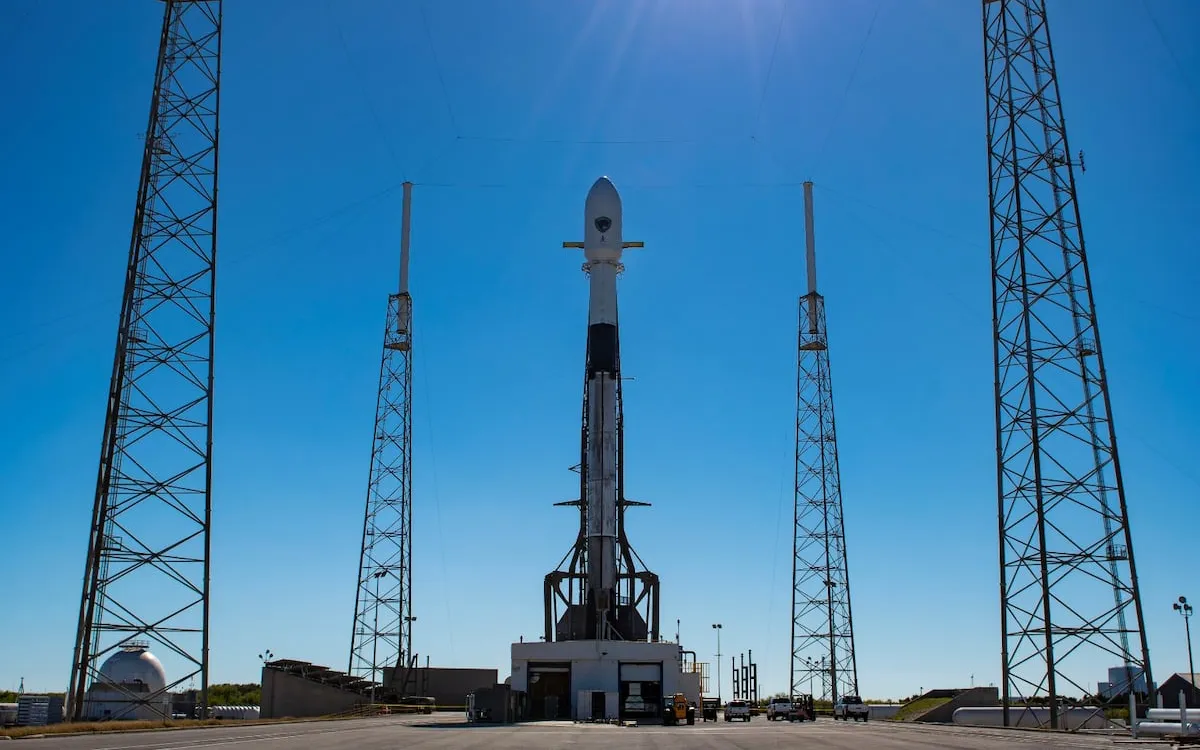
On Friday, the Space Force achieved a significant milestone by successfully launching its latest GPS III satellite into orbit. This accomplishment showcases the military's enhanced capability to prepare and launch spacecraft on remarkably condensed timelines. The satellite was launched aboard a SpaceX Falcon 9 rocket from the Cape Canaveral Space Force Base in Florida.
The GPS III satellite, developed by Lockheed Martin, represents the latest advancement in the navigation and timing system used by both military and civilian sectors. This satellite is designed to offer improved anti-jamming capabilities and will broadcast additional signals for military and civilian use, thereby enhancing overall GPS capacity.
This launch marks the second mission in a series of Rapid Response Trailblazer (RRT) missions conducted by the Space Force. These missions aim to test the capability of launching high-value satellites swiftly in response to urgent national security needs. The objective is to reduce the launch process timeline from what traditionally takes up to two years to just a few months.
The inaugural RRT mission took place in December, successfully shortening the interval between launch notification and liftoff to approximately five months. The subsequent mission, conducted on May 30, further improved this timeframe to around 90 days.
“What we’re demonstrating here is that with our current vehicle systems, if there is an urgent need to launch something into orbit, we have the capacity and the knowledge required to make that happen,” stated Mission Director Walt Lauderdale during a pre-launch briefing on May 28.
The Space Force has already demonstrated its ability to launch small payloads on commercial rockets on demand through its Tactically Responsive Launch program. The RRT missions are now proving this capability for larger, more complex payloads, specifically the GPS III satellites.
The decision to utilize GPS III satellites for the initial RRT missions was influenced by several factors. Notably, the military signal known as M-Code is in high demand among Department of Defense (DOD) users. Both recent missions had originally been planned to launch on United Launch Alliance’s Vulcan rocket, which has only recently been certified for national security missions. The flexibility of GPS III satellites to fly on multiple launch vehicles enabled the Space Force to easily transition to the SpaceX rocket, allowing for a comprehensive test of both the launch provider's and Lockheed's capabilities.
According to Col. Andrew Menschner, commander of Mission Delta 31, the importance of multi-vehicle qualification has been communicated to Space Force leadership, and there is an expectation that more spacecraft will be designed with this adaptability in mind for future missions.
The mission also benefited from having multiple GPS III satellites readily available at Lockheed’s factory, demonstrating the utility of maintaining systems on standby for quick launches. “We’re working to prove that we can respond swiftly to an on-orbit failure of a vehicle while also exploring the best methods to enhance resilience with shorter launch timelines,” Menschner elaborated. “One approach to resilience is having completed vehicles in the factory, ready to launch as needed.”
While these missions have successfully demonstrated faster launch timelines, Lauderdale emphasized that this expedited approach may not be applied to all future GPS launches. Instead, spacecraft readiness will likely dictate the launch cadence. “I wouldn’t expect this to become a regular occurrence, but we are illustrating what it takes to respond swiftly to unexpected needs and how we can effectively support the warfighter,” he concluded.
For more insights on space operations and military advancements, follow C4ISRNET, where reporter Courtney Albon has been covering the U.S. military landscape since 2012, focusing on the Air Force and Space Force's critical acquisition, budget, and policy challenges.